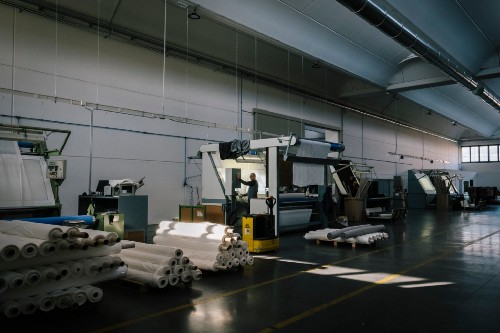Bitcoin mining has the potential to save distressed heavy industrial businesses
| If you find WORDS helpful, Bitcoin donations are unnecessary but appreciated. Our goal is to spread and preserve Bitcoin writings for future generations. Read more. | Make a Donation |
Bitcoin mining has the potential to save distressed heavy industrial businesses
By Michael Nov & Harry Sudock
Posted July 31, 2020

TLDR: When executing a sponsor backed buyout of a distressed Energy Intensive Manufacturing business (heavy manufacturing, mining, etc.), adding a Bitcoin mining layer to the transaction can reduce the fixed costs burdened by the business, improve IRR and reduce risk of the overall transaction.
Introduction
Modern industrial America has been particularly unkind to a subset of the Energy Intensive Manufacturing Sector; a combination of increasing globalization, tightening labor markets, and overall rising COGS created a dynamic where many of these businesses became unprofitable on a marginal basis. COVID-19 combined with all these headwinds became the final nail in the coffin for many.
The system wide demand shock caused by Covid-19 significantly impacted every element of manufacturing businesses, starting from the top line. As most of the US went on lock down, demand vanished. The prevailing strategy was to buy time at all costs. Some businesses were able to temporarily mitigate this financial impact by laying off employees or receiving financial aid in the form of Federal / State programs such as the Payroll Protection Program (”PPP”). The PPP, as well as most other aid programs, were designed to support payroll (PPP requires businesses to allocate at least 60% of the forgivable amount to payroll). Businesses that have a higher than average utility expenses as % of their cost structure faced a tough decision — to lay off employees or pay the utility bill.
Over the last decade the Bitcoin mining industry significantly matured and, today, most North American Bitcoin miners are VC / PE backed and are well regulated, no more mining in garages or basements. Furthermore, many of the traditional risks that were associated with Bitcoin mining, including the Bitcoin price volatility, can be mitigated through commonly used hedging tools. The Bitcoin mining industry evolved into an infrastructure business that is designed to directly monetize electricity.
As many manufacturing businesses find themselves in financial distress, integrating a Bitcoin Mining facility into an existing factory creates a unique opportunity to mitigate a short-term financial shock and provide skilled operators with a one-to-two year window for a comprehensive restructuring.
Bitcoin Mining Ecosystem

Bitcoin mining has significantly matured over the last decade from a fringe hobby to a multi-billion dollar industry that consumes more electricity than a mid-size country such as Switzerland. The role of Bitcoin miners within the ecosystem is simple — to secure the network. Bitcoin miners run a small computer (Application Specific Integrated Circuit, “ASIC”) that solves a difficult mathematical equation. If the miner solved the equation correctly, s/he is compensated in the form of Bitcoin.
The Bitcoin mining operational model is relatively simple; continuously optimize for electricity as it represents between 60% — 70% of Opex. While the model itself might be simple, reality is far from it. Effectively mining Bitcoin over multiple years requires the operating team to be very diverse and proficient in many fields including network security, electrical engineering, hardware performance and maintenance, financial engineering and, of course, regulatory maneuvering. Bitcoin mining could be viewed as the child of Gold Mining and Data Center Management.
Today, the Bitcoin mining ecosystem includes established and well-funded players such as:
- Miners: Layer1 (raised $50M from Shasta Ventures and Peter Thiel), Crusoe Energy (Bain Capital Ventures, Upper90, Founders Fund), GRIID Infrastructure, and others
- Equipment Providers: BitMain Technologies (Sequoia backed Deca-corn), MicroBT (>$1Bn in 2020 already), Canaan Creative (Successful NASDAQ IPO)
- Mining Pools: F2Pool, Poolin, BTC.com
Additionally, traditional “players” such as exchanges, derivative providers, and underwriters also play a significant role in the industry.
10 years after the first Bitcoin was mined, the industry has finally matured to one that can be legally operated and reported in the US, without (significant) regulatory scrutiny. Bitcoin mining is just another business that uses technology to earn the good old USD.
Energy Intensive Manufacturing Sector
To mine Bitcoin one needs very little — cheap power, some electrical infrastructure, dedicated ASIC equipment, and space. Many industries can satisfy these criteria; however, energy intensive manufacturing stands out due to the cost structure of most companies and their unique relationships with utility providers.
Industry participants across all sub-sectors including heavy industrials, pulp and paper manufacturing, and refining have high Capex and a significant part of their expenses is dedicated towards paying the utility bill, and specifically paying for electricity. To optimize this cost, businesses build contracts with local utilities giving the business a lower KWh cost, and in some cases electrical infrastructure support. To justify these lower rates, the utility requires the EIM business to guarantee a monthly minimal electricity consumption — a win-win.
EIM is a low margin business with very high COGS (up to 70% in some cases) which could be further decomposed into to a few key elements — payroll, raw materials, and utility bills (mainly electricity). While payroll and raw materials expense are variable, a portion of the utility bill is fixed; the payment for electricity does not stop when production stops.
In early March of 2020, as Covid-19 was making its way through the rustbelt, many businesses stopped production and furloughed their employees, however they had to continue paying for electricity increasing their financial distress.
Transaction Stakeholders, Structure, and Opportunity

Multiple structures can be created to combine Bitcoin mining with a “traditional” middle market EIM business. However, all structure will include the same set of roles (in some cases a stakeholder could fill multiple roles). The following stakeholder roles will exist:
- Target EIM — distressed Energy Intensive Manufacturing business with TTM EBITDA of $3M — $5M which was significantly impacted by Covid-19
- Mining Operator — existing Bitcoin miner with experience operating multiple facilities and established relationships in the crypto space (e.g., equipment sourcing, security, liquidation)
- Financial Sponsor — Middle market focused Private Equity / Family Office with interest and mandate to acquire energy intensive manufacturing businesses
- Credit Facility Provider — financial institution (Crypto / traditional) with experience / desire to provide $10M — $20M in debt for crypto mining (collateralized by mining equipment)
The transaction itself should be led by the Financial Sponsor who has an existing investment thesis around Energy Intensive Manufacturing businesses (across all sub-sectors) and a target acquisition price of $10M — $15M. Post-acquisition, to mitigate the temporary decline in profitability, Financial Sponsor will create and lease part of the facility to the Bitcoin mine operator, who in return will guarantee the consumption of the minimal electricity contract.
Additionally, to align interests on both sides, the following areas should be considered:
- Electrical build out for the mining operation will be paid by the Bitcoin miner, however the existing EIM facility will be leveraged to decrease the costs to under $100k/Mw
- Financing for the Bitcoin mining operations will be provided through a dedicated credit facility collateralized by only the mining equipment (Credit Facility Provider) i.e., fully separated from the EIM
- To reduce transaction risk, Bitcoin miner will provide Financial Sponsor with a 12 months Opex guarantee (electricity costs) for the first 2 years through hash / BTC futures
Due to the nature of EIM businesses a 30% — 50% decline in revenue can create >50% decline in EBITDA. Knowing that electricity representing 20% — 40% of COGS, in the above scenario an EIM will pay between $2M — $3.5M annually for electricity implying a monthly capacity of 15–20 Mw. Assuming the Financial Sponsor has a standard 5–7 years hold period, an annual decrease of ~$1M in Opex for the first 2 years will significantly improve the leverage ratio of the transaction, grow IRR, and give the Financial Sponsor a expense “safety net” to restructure the business.
Target Selection Criteria
Multiple targets can fit the criteria of distress middle market EIM businesses; however, a specific set of criteria should be evaluated to ensure the fit:
Electricity Contract:
- Signed contract with local/regional Utility for electricity consumption
- Under $0.03c KWh cost
- Power costs guaranteed up to at least the EIM minimum capacity and overall power cost is reflected by both Miner and EIM
- Guaranteed monthly minimal consumption of 20% of capacity
Business:
- TTM Target Revenue: $10M — $15M (assuming 33% gross margin)
- Profitable on unit basis but not profitable overall
- YoY decline in revenue of 5% — 20%
- Electricity consumption of TTM prior to Covid-19 was 10% — 30% below minimal guaranteed consumption
- Negatively impacted by Covid-19 and is in a cash crunch
Note: while this thesis was focused on EIM businesses, it can be adjusted to serve mature renewable energy producers with over capacity
